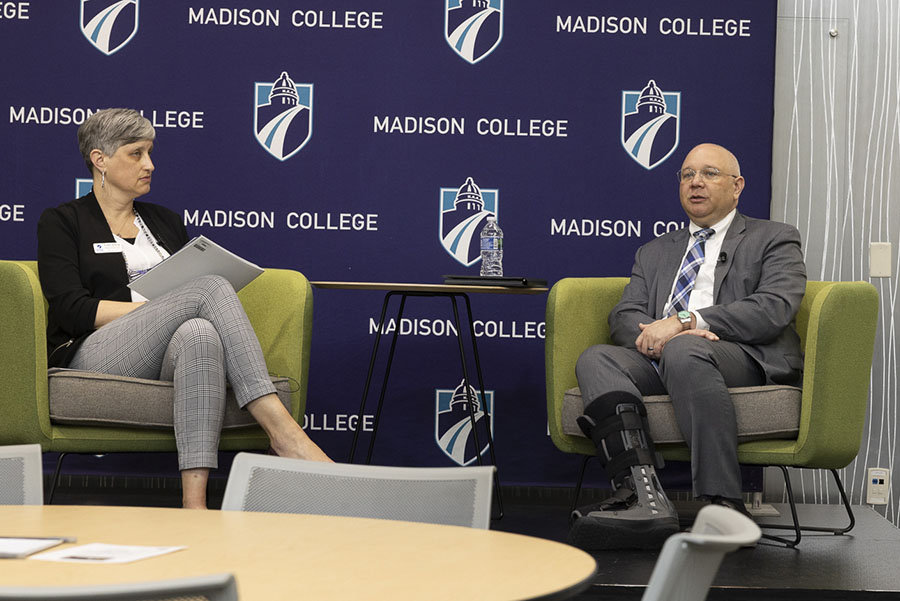All roads lead to something better
February 4, 2016
Some of us know that there are many roads to recovery, but what many of us do not know are the various ways in which to recover. Take, for example, 12 step recovery: 12 step recovery has been a landmark in the United States for over 80 years. Since the mid 1930s, when Bill Wilson and Dr. Bob Smith founded Alcoholics Anonymous, literally millions of people all across the globe have been bettering their lives in a program of recovery that is well outlined in a 12 step process, giving them the tools they need to discover a solution-based way of life.
There are other programs of recovery that also use the 12-step model, they may vary in their methods, but all follow the same 12 step process. They focus on less socially acceptable vices, i.e. Cocaine Anonymous (C.A.), Heroin Anonymous (H.A.), Methamphetamine Anonymous (M.A.), and the all encompassing Narcotics Anonymous (N.A.), which focuses not on any single substance, but on the disease of addiction itself, and the obsession, compulsion and self-centered fear that comes with it. There have also been a slew of family support groups based on the 12 steps, stemming from Al-Anon groups founded by Lois Wilson, wife to A.A. founder Bill Wilson.
Let us not forget, about the behavioral 12 step groups, such as Overeaters Anonymous and Sex Addicts Anonymous. Both of which have helped a multitude of people rediscover their better selves.
In the Madison area alone, there are hundreds of 12 step meetings on a weekly basis. Helping those identifying as addicts, alcoholics and a number of other disorders find support in their ongoing struggles and successes in recovery.
The 12 step disease model can offer a person looking for recovery both a curse and a blessing in its staunch abstinence based programming. There are those within the 12 step programs who would argue that continued relapse, while not necessarily equaling failure, does do the individual a disservice in terms of functional, successful, long term recovery from whatever chemical and/or behavioral disorder they are living with. In contrast, many of these 12 steps fellowships have strong reservations for other methods of recovery. Not to say that they go out of their way to rescind or chastise in a public forum their feelings about these “outside issues,” especially since their traditions forbid doing so.
There is definitely something to be said for the harm reduction approaches that now exist in modern society, and their long term effects on those who are in or seeking recovery. There are needle exchange programs throughout the country that serve addicts on a daily basis with the necessary technical tools to maintain drug habits while adhering to necessary safety measures to ensure the user does not contract any number of transmittable diseases, such as hepatitis C, or HIV. There are also a number of medically monitored “shooting galleries” opening up throughout North America and abroad. We have yet to see one in the United States, as most injectable drugs are also Schedule 1 & 2 narcotics, but as public opinion changes, so will public policies.
There are drugs on the market that assist those addicted to opiates, such as Methadone, that have long been used to help ease addicts out of their daily regimen of illicit drug use, however, many would argue that the exit strategies are still not clear enough to necessitate what could be considered long term recovery.
Newer drugs, like Suboxone, are now on the market and have been used in countless inpatient treatment facilities and prescribed by doctors working in those facilities to help those seeking long term abstinence from the illicit drug, heroin.
Once again, there are those in the recovery communities who have a disdain for these medical maintenance programs, deeming them as “not quite” recovery enough. A new drug called Vivitrol has been raising some eyebrows in the past year, especially those looking for a quick fix remedy to their heroin addiction, or that of a loved one. Vivitrol has been proving somewhat successful in the lives of addicts released from the Dane County Jail and into the Dane County Drug Treatment Court programs. This new drug comes at quite the cost, averaging $1,000 per dose, and is administered monthly.
As individuals, each person who enters into a recovery lifestyle has within them the means and the tenacity to carve out whatever kind of life he or she wants. I use the word tenacity, specifically, because I believe anyone who can survive an addiction, even for a short time, must have a viable inner source of absolute will to live within them, and there is no other word in my vocabulary that epitomizes such.
This will I speak of is not to be confused with the self-will that many in the 12-step community often refer to as the very thing that leads one back into an addiction; what I am talking about is more of what keeps us thriving and searching for a better way to live. Tenacity is what brings us into recovering, not into addiction. I think it goes without saying that anyone who seeks a better way of life, in or out of recovery, has something to offer those around them, and those of us in long term recovery just have a little more to say about it.
Anyone looking to better their situation whether they are in recovery from alcohol or other drugs, a sexual addiction, an eating disorder, anxiety or depression, or just the trauma that sometimes comes with being a human being, is probably living a fuller life than were they not able to claim any number of the above struggles. Till next time, be well, be safe, and live free.
































